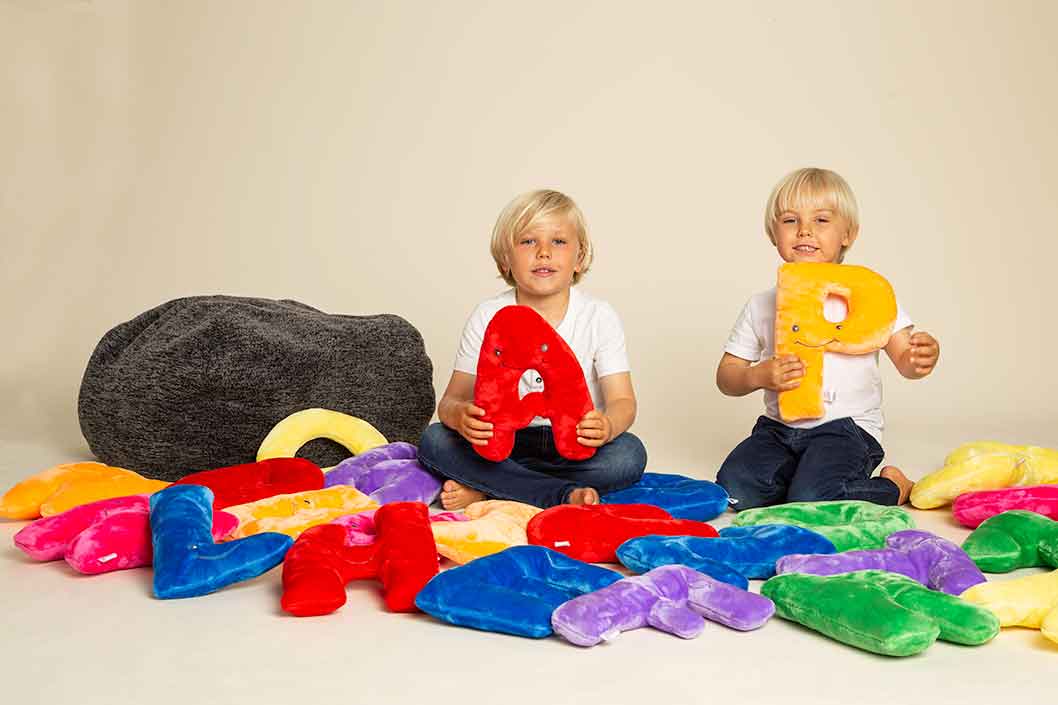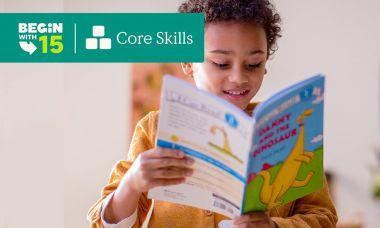Hey there! Have you ever wondered when and how kids learn to read? Did you know that 38% of fourth-grade students in the United States have reading abilities below the basic level? This alarming statistic, revealed by the National Assessment of Educational Progress (NAEP), underscores the importance of early reading intervention. In this article, we’ll delve into the critical role of early reading, the challenges faced by students, and how parents can foster a love for reading from a young age.
The Challenge
The NAEP report highlights that 38% of fourth-grade students fall below the basic reading level, with a score of 208. To put this in perspective, the U.S. reading scale has an upper limit score of 500. The implications of this challenge are significant, as reading proficiency is a crucial skill that influences a student’s academic journey.

The Exciting Journey of Learning to Read
Exploring the Joy of Unlocking New Worlds through Reading
Learning to read is an exciting adventure that opens up a whole new world of possibilities for children. As they start to recognize letters and blend them into words, they are able to understand stories and information in books, magazines, and even on the internet. This ability to read equips them with the knowledge and skills they need to navigate through life. Imagine the thrill of deciphering those first few sentences and realizing that you can access a wealth of knowledge and imagination.
Overcoming Challenges and Celebrating Milestones in Reading
Learning to read is not without its challenges, but overcoming them is part of the journey. Children may encounter difficulties in recognizing certain words or understanding complex sentence structures. However, with practice and support, they will gradually conquer these hurdles and reach significant milestones in their reading abilities. The first time they read a whole book independently or comprehend a complex story is cause for celebration and a testament to their hard work and perseverance.
Building the Foundation- When Do Kids Learn to Read
Developing Listening and Speaking Skills as Precursors to Reading
Before children can learn to read, they must first develop strong listening and speaking skills. These skills form the foundation for reading comprehension and phonemic awareness. Engaging in conversation with children, reading aloud to them, and encouraging them to express themselves orally helps to develop their vocabulary, sentence structure, and ability to understand spoken language. By building a strong foundation in listening and speaking, children are better prepared to decode and comprehend written words.
Enhancing Vocabulary and Phonemic Awareness for Reading Readiness
Expanding vocabulary and developing phonemic awareness are key components of reading readiness. Children who have a wide range of words in their vocabulary are more likely to understand what they encounter while reading. Similarly, phonemic awareness, the ability to recognize and manipulate individual sounds in words, helps children decode and encode words. Parents can support these skills by engaging children in activities that build vocabulary, such as reading books, playing word games, and singing songs that focus on letter sounds.
The Role of Parents- When Do Kids Learn to Read
Fostering a Positive Reading Environment at Home
Parents play a crucial role in supporting their children’s reading development. Creating a positive reading environment at home is key to fostering a love for reading. This can be achieved by having a variety of age-appropriate books available, establishing a quiet and comfortable reading space, and incorporating reading into daily routines. Displaying enthusiasm for reading and sharing their own reading experiences also encourages children to see reading as an enjoyable and valuable activity.
>The Importance of Parental Involvement in Education
Engaging in Interactive Reading Practices with Children
In addition to creating a positive reading environment, parents can also engage in interactive reading practices with their children. This means actively involving children in the reading process by asking questions, encouraging predictions, and discussing the story or information being read. By providing opportunities for children to actively engage with the text, parents help them develop comprehension skills and a deeper understanding of what they read. This also strengthens the parent-child bond and creates memorable reading experiences.
When the Magic Begins- When Do Kids Learn to Read
Recognizing the Signs of Readiness for Independent Reading
Every child is different, and there is no set age for when a child will start reading independently. However, there are certain signs that indicate a child may be ready to take the leap into independent reading. These signs include showing an interest in letters and words, attempting to read signs or labels, and demonstrating an understanding of basic phonics principles. Parents can support their child’s readiness for independent reading by providing books at their level, encouraging them to try reading on their own, and celebrating their progress along the way.
Understanding the Typical Age Range for Children to Start Reading
While the age at which children start reading independently can vary, most children typically begin to read between the ages of four and seven. Some children may show an earlier interest and readiness for reading, while others may take a little longer to develop the necessary skills. It’s important for parents to remember that each child learns at their own pace and that nurturing a love for reading is more important than focusing on a strict timeline. By providing support, encouragement, and age-appropriate reading materials, parents can help their children embark on their reading journey when they are ready.
Reading Readiness: Signs that Indicate Your Child is Ready to Learn
Observing Developmental Milestones
Observing the developmental milestones of your child can give you an indication of their readiness to learn how to read. Language development is one of the key indicators. If your child is able to understand and follow simple instructions, has a growing vocabulary, and can communicate their needs and wants effectively, it suggests that they are ready for the next step in their reading journey. Additionally, fine motor skills, such as being able to hold a pencil or crayon and turn pages in a book, are also important signs of readiness.
Click here to learn how to easily and quickly teach your child to read.
Interest in Books and Stories- When Do Kids Learn to Read
If your child shows a keen interest in books and stories, it is a good sign that they are ready to learn how to read. They may ask for bedtime stories or show excitement when visiting the library. Being able to sit still and listen to a story attentively is also an indicator that your child is ready to engage with the written word. Their enthusiasm for books and stories will provide motivation for them to start learning to read.
Awareness of Letters and Sounds
Another sign of readiness is when your child starts showing awareness of letters and sounds. They may begin to recognize familiar letters in their environment, such as on signs or in their name, and attempt to sound them out. They might also show an interest in playing with letter magnets or alphabet puzzles. These interactions with letters and sounds demonstrate that they are developing the foundational skills needed for reading.
The Building Blocks: Phonics and Sight Words in Early Reading Development
Introducing Letter Sounds and Blending
Once your child is ready to learn to read, one of the first steps is introducing letter sounds and blending. Phonics is an essential component of early reading development. You can start by teaching your child the sounds each letter makes and then help them combine those sounds to form words. This process of blending sounds together will enable them to decode and read simple words.
Recognizing Sight Words
Sight words are frequently used words that young readers need to recognize instantly, without having to decode them phonetically. These words often cannot be sounded out, so it is important for children to memorize them. Some common examples of sight words include “the,” “and,” “you,” and “is.” As your child progresses in their reading journey, they will become more adept at recognizing and quickly identifying these words, which will enhance their reading fluency and comprehension.
Building Vocabulary and Comprehension
As children learn to read, it is essential to focus on building their vocabulary and comprehension skills. Encourage your child to ask questions about the story they are reading, engage in discussions, and make connections to their own experiences. This will help them develop a deeper understanding of the text and improve their overall comprehension. Additionally, exposing them to a variety of texts and genres will expand their vocabulary and broaden their knowledge.
> Teaching Letter Names and Sounds – Parenting Literacy
Sparking Interest: Tips for Creating a Fun and Engaging Reading Environment
Creating a Cozy Reading Nook
Creating a cozy reading nook in your home can help cultivate a love for reading. Designate a comfortable corner or area with soft cushions, a bean bag chair, or a cozy blanket. Stock the space with a variety of age-appropriate books and ensure there is good lighting. Making this space inviting and comfortable will encourage your child to spend time there, exploring books and stories.
Using Interactive and Multisensory Activities
To make reading fun and engaging, incorporate interactive and multisensory activities. For example, you can act out scenes from a story, use props and puppets, or create crafts related to a book. Technology can also be utilized to enhance learning, such as interactive reading apps or websites. These activities stimulate different senses and make reading a multisensory experience, which can greatly enhance your child’s engagement and enjoyment.
Exploring Different Genres and Topics
Expose your child to a wide range of genres and topics to spark their interest in reading. Offer books about animals, adventures, mysteries, history, fantasy, and more. Take regular trips to the library and let your child choose their own books to read. Allowing them to explore different genres and topics will enable them to discover their own reading preferences, making the reading experience more enjoyable and personal.
Embracing Individuality: Understanding that Each Child Learns to Read at Their Own Pace
Recognizing and Supporting Different Learning Styles
It is important to recognize that each child has their own unique learning style. Some children may be visual learners, while others may be auditory or kinesthetic learners. By identifying your child’s learning style, you can tailor your teaching methods accordingly. For visual learners, using flashcards or writing words on colorful posters may be helpful. Auditory learners may benefit from listening to audiobooks or repeating sounds out loud. And kinesthetic learners may thrive with hands-on activities or tracing letters with their fingers. Understanding and supporting different learning styles will ensure that your child learns to read in a way that suits them best.
Patience and Encouragement in the Learning Journey
Learning to read is a gradual process, and it is important to be patient and provide encouragement along the way. Some children may grasp reading quickly, while others may take more time. Celebrate small victories and milestones to keep your child motivated and eager to continue learning. Offer praise for their efforts, and provide support when they encounter challenges. Building their confidence and self-esteem will make the learning journey more enjoyable for both of you.
Fostering a Love for Reading Instead of Focusing solely on Progress
While it is important to track your child’s progress in reading, it is equally crucial to foster a love for reading. Encourage reading for pleasure by allowing your child to choose books that genuinely interest them, even if they are at a lower reading level. Take turns reading aloud to each other, participate in reading challenges, or join a book club for children. By focusing on the joy and pleasure of reading, your child will develop a lifelong love for books and continue to improve their reading skills organically.
Reading: Unlocking a World of Wonder
Hey there! So, when do kids learn to read? Well, it’s a thrilling journey, my friend. Picture this: a child eagerly flipping through the colorful pages of a book, their eyes wide with excitement as they decode words and immerse themselves in a fantastical world. It’s a defining moment in every child’s life. But before they can delve into the magic of reading, they need to build a solid foundation. Pre-reading skills, nurtured by parents, play a crucial role in igniting a love for reading. And let’s not forget, each child has their own pace. Some start reading as early as three, while others may take a bit longer. But fear not! There are signs to look out for to determine if your little one is ready to embark on this journey. Phonics and sight words become the building blocks, helping them unlock the joy of reading. So, create a fun and engaging reading environment, my friend! Spark their interest, embrace their individuality, and let them explore the wonder that awaits them in the world of books. Trust me, it’s a journey you won’t want to miss! So, grab a book, snuggle up, and let the adventure begin!
Conclusion
Embarking on the journey of learning to read is a thrilling adventure for children and parents alike. By recognizing the signs of readiness, building a strong foundation, and fostering a love for reading, parents play a pivotal role in unlocking the wonder of reading. So, grab a book, snuggle up, and let the magical journey of reading begin!

